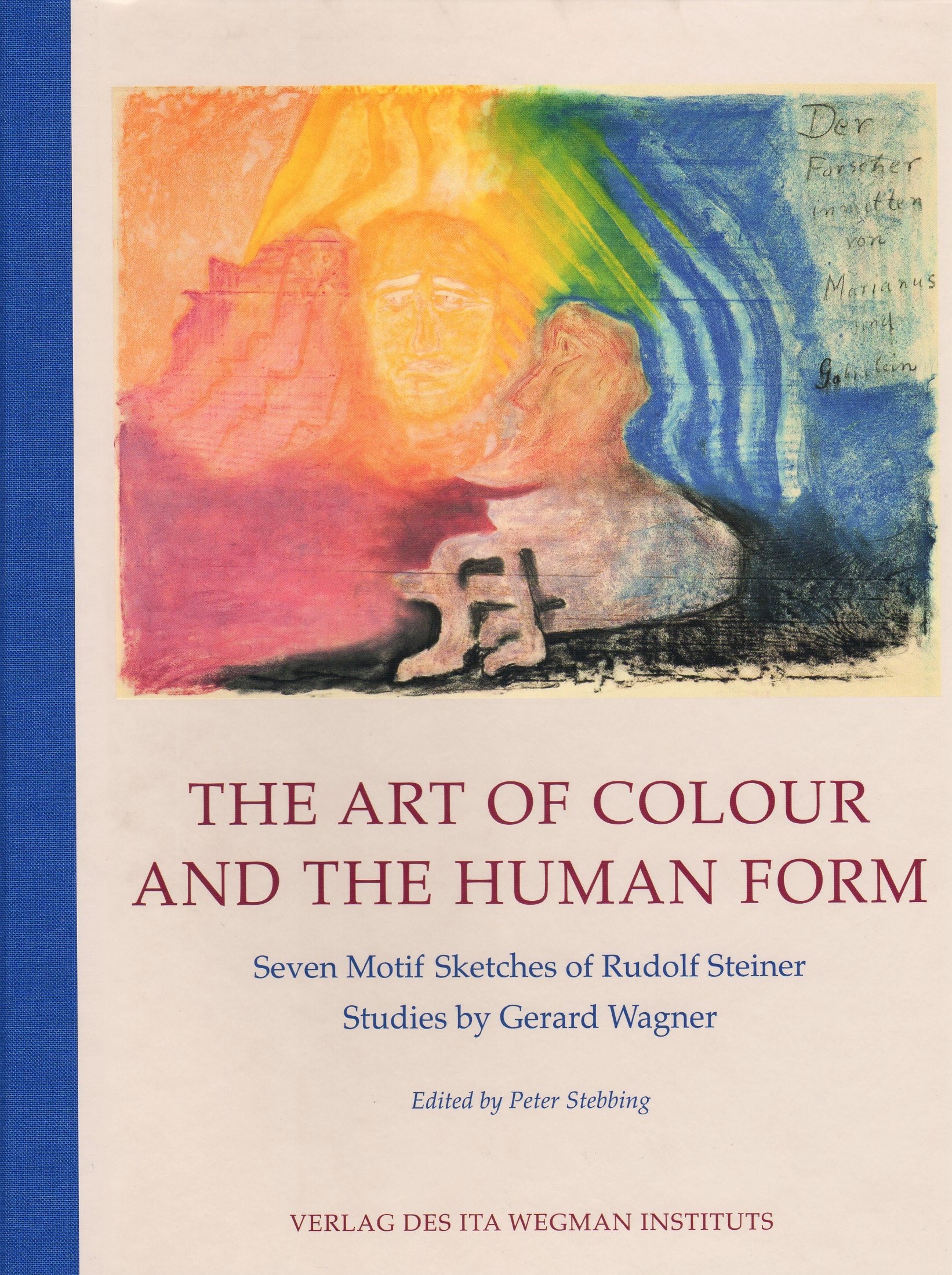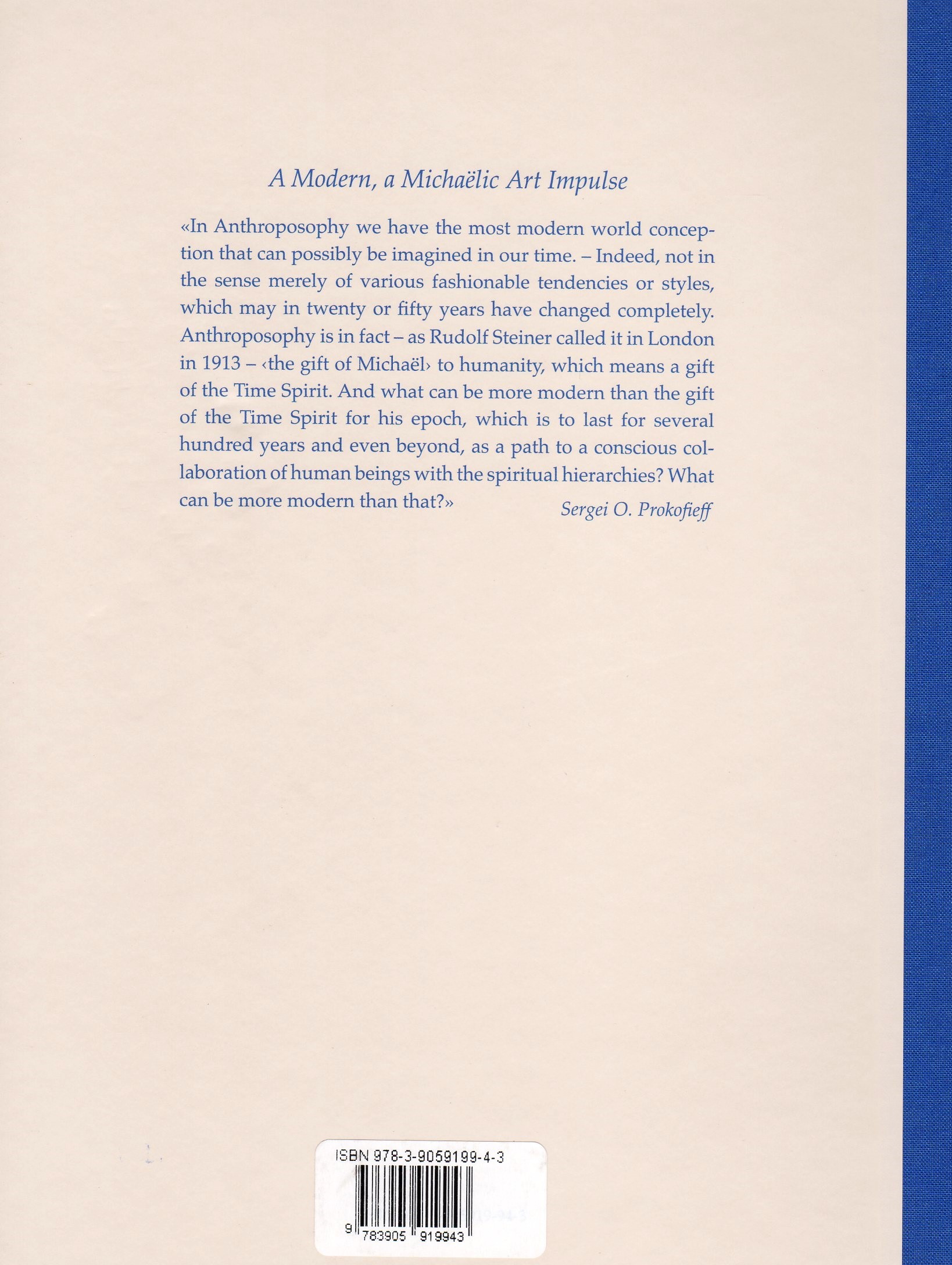The Art of Colour and the Human Form: Seven Motif Sketches of Rudolf Steiner: Studies by Gerard Wagner
“In Anthroposophy, we have the most modern worldview that can possibly be imagined in our time…. Anthroposophy is, in fact—as Rudolf Steiner called it in London in 1913—‘the gift of Michael to humanity,’ meaning a gift of the Time Spirit. What can be more modem than the gift of the Time Spirit for his epoch, which is to last for several hundred years and even beyond as a path to a conscious collaboration of human beings with the spiritual hierarchies? What can be more modem than that?”—Sergei O. Prokofieff
Based on Rudolf Steiner’s indications, Gerard Wagner shows a wholly new approach to the human form in art. The Art of Colour and the Human Form presents the seven motif sketches concerned with the “spirit form of the human being,” as well as numerous studies that Gerard Wagner painted over a period of thirty years. The intention of this volume is to present an artistic approach to these unique motifs and to indicate their potential “color build-up.”
The Art of Colour and the Human Form contributes to a more comprehensive understanding of this new direction in art.
“The human being is the most exalted, indeed the true subject of visual art.” — J. W. Goethe, Propylaea
“…when we speak of visual art…it is above all a matter of understanding how everything in the visual arts ultimately aims at, proceeds from, and creates out of the human form. — Rudolf Steiner, Becoming Fully Human, p. 43
“The actual underlying problem in painting in our time can be designated as ‘depicting the spirit form of the human being out of the color.’” — Maria Strakosch-Giesler, Die erlöste Sphinx, 1955
CONTENTS
- Foreword by Peter Selg
- Introduction
- “The Renewal of Art through Anthroposophy” by Rudolf Steiner
- “The Human Form in Art” by Peter Stebbing
- Egyptian Wall Paintings in Thebes
- Archaic and Classical Greek Sculpture
- On Raphael
- The Incarnadine of the Human Being
- Transcendental Figures in Early 19th Century Art
- The Human Being in the Supersensible
- Group Souls—The Human Being
- Light and Darkness (Lucifer and Ahriman)
- The Seer between Marianus and Gabrilein
- Let there Be Distance and Life
- The Threefold Human Being
- The Human Being in the Spirit
- The Spirit in the Human Being
- Addendum
- A New Approach to the Human Form in Art
- Rudolf Steiner’s Colour Circle
- “Painting as a Two-Dimensional Art” by Gerard Wagner
- A Note on the Art of Light-and-Dark
- Afterword
- About the Painter Gerard Wagner
- On the Lifework of Henni Geck
About the Author
Rudolf Steiner (1861–1925) was born in the small village of Kraljevec, Austro-Hungarian Empire (now in Croatia), where he grew up (see right). As a young man, he lived in Weimar and Berlin, where he became a well-published scientific, literary, and philosophical scholar, known especially for his work with Goethe’s scientific writings. At the beginning of the twentieth century, he began to develop his early philosophical principles into an approach to systematic research into psychological and spiritual phenomena. Formally beginning his spiritual teaching career under the auspices of the Theosophical Society, Steiner came to use the term Anthroposophy (and spiritual science) for his philosophy, spiritual research, and findings. The influence of Steiner’s multifaceted genius has led to innovative and holistic approaches in medicine, various therapies, philosophy, religious renewal, Waldorf education, education for special needs, threefold economics, biodynamic agriculture, Goethean science, architecture, and the arts of drama, speech, and eurythmy. In 1924, Rudolf Steiner founded the General Anthroposophical Society, which today has branches throughout the world. He died in Dornach, Switzerland.
Gerard Wagner (1906–1999) was born in Germany and grew up in England. He began his vocation as an artist by learning from an English plein air painter before starting formal studies at the Royal College of Art in London. Beginning in 1926, he took up the challenge of a new direction in painting as initiated by Rudolf Steiner, which became the essence of his life’s work for more than seventy years. Through his efforts to grasp the secrets of Steiner’s training sketches for painters, Wagner succeeded in disclosing their metamorphic character and, from this, was able to develop a systematic approach to painting. Elisabeth Wagner-Koch, whom Gerard later married, became his first student in 1950, and together they established The Painting School at the Goetheanum, of which he remained the principle teacher until his death in Arlesheim,Switzerland. Rudolf Steiner’s indications for an art of the future remained the impulse for Wagner’s research and artistic activity throughout his life. The fruits of his research are a unique method of teaching and his archive of paintings, which continue to be a source of inspiration for the school. Wagner’s wife Elisabeth cares for the archive of about 4,000 paintings.
Peter Stebbing was born in Copenhagen in 1941 and attended Waldorf schools before studying art in Brighton and London. He moved to the U.S. and graduated from Cornell University with an M.F.A. in painting. Following his first teaching stint at the University of Kansas, Peter began teaching color courses at the City University of New York in 1970. Having begun investigations into Goethe’s color theory, he visited the Gerard Wagner painting school in Dornach, Switzerland. There he began training with Wagner, who asked him to teach in the school. Peter later established a painting school at the Threefold Educational Foundation in Spring Valley, New York. For the past thirty years, he has taught introductory courses in Goethe’s color theory with experiments in England, Germany, Switzerland, and the U.S. Since 1992, Peter has been director of the Arteum Painting School in Dornach, Switzerland, and has held a number of exhibitions of his work in Europe and North America.
Peter Selg was born in 1963 in Stuttgart. He studied medicine in Witten-Herdecke, Zurich, and Berlin and, until 2000, worked as the head physician of the juvenile psychiatry department of Herdecke Hospital in Germany. Dr. Selg is director of the Ita Wegman Institute for Basic Research into Anthroposophy (Arlesheim, Switzerland) and professor of medicine at the Alanus University of Arts and Social Sciences (Germany). He lectures extensively and is the author of numerous books on Rudolf Steiner, Spiritual Science, and the development of culture and consciousness, many of which have been translated and published in English. He is married with five children.












Reviews
There are no reviews yet